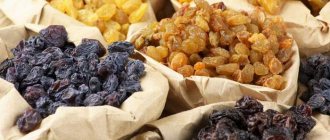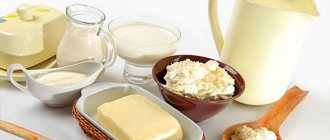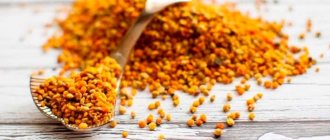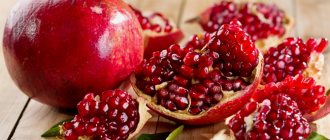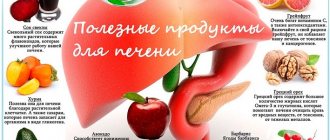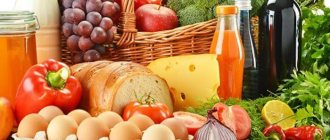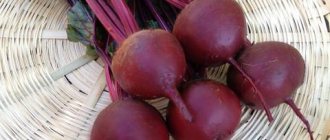The text is for informational purposes only. We strongly urge you not to use diets, resort to any therapeutic menus or fasting without medical supervision. We recommend reading: “Why can’t you go on a diet on your own?”
One of the most important organs of the digestive system, which allows it to function smoothly, is the pancreas. It produces both digestive enzymes and hormones (insulin and glucagon), which in turn regulate blood sugar levels. In order for an organ to function normally, it is necessary to “feed” it correctly.
What can you eat?
There are products that allow the pancreas to better cope with its functions, maintain it in a normal state, which has a beneficial effect on human health in general.
These include:
- Sea kale, which improves digestion and helps cleanse the gastrointestinal tract. In addition, it is rich in iodine, potassium, calcium and iron;
- Everyone knows about the benefits of fruits, but it is oranges, kiwis and apples that are beneficial for the pancreas. They are rich in vitamins B, C, A, potassium and calcium. Apples, thanks to pectin, bind toxins and naturally remove them from the body. Kiwi contains substances that are involved in insulin metabolism. Also, this exotic fruit is not deprived of phosphorus, vitamin C, magnesium and potassium. You can supplement your diet with lemons, pomegranates and limes;
- If you turn to cereals, then millet will help improve the activity of the pancreas. The substances included in its composition take part in the synthesis of insulin. In addition, millet is rich in vitamin B and beneficial microelements. Oatmeal and buckwheat will help diversify the menu;
- Nuts, namely walnuts, thanks to the polyunsaturated fatty acids they contain, promote the production of pancreatic juice, thereby improving digestion.
- If you need to keep the gland in a healthy state, you need to include green and onions in your daily diet, but not raw ones. Other vegetables that will benefit are carrots and beets, zucchini and pumpkin, and bell peppers;
- Berries: cranberries, cherries, watermelon, currants, blueberries, lingonberries;
- It is important to remember about dried fruits: prunes and dried apricots;
- Healthy meat products include chicken, veal and beef, as well as offal: beef liver and beef tongue;
- You need to include red fish, sea bream, pike perch, sea bass, sole and perch in your diet, and don’t forget about squid;
- Oils must be present in the menu, preferably olive and corn, but sunflower oil will not harm the pancreas;
- It is important to consume fermented milk products daily: yoghurts, kefir, yogurt, fermented baked milk. High-quality cheeses and eggs will be useful;
- Pasta lovers should choose products made from durum wheat; such side dishes will not harm the pancreas;
- From alcoholic drinks, you can sometimes afford dry grape or plum wine, tequila and cognac;
- For non-alcoholic drinks, it is better to choose teas: green, black, chamomile, rosehip.
However, if you already have problems with the pancreas, then it is better to forget about alcohol in any form. You should also limit some healthy, but overly sweet foods: cherries, honey. It is better not to eat chilled dishes; let them be at room temperature or moderately hot.
Classification of the dangers of alcohol
Food products containing 1.5% ethyl alcohol are classified as alcoholic.
Depending on the ethanol content, alcoholic drinks are:
- Low alcohol (wine, beer, champagne)
- Strong (vodka, cognac, whiskey, brandy, rum and others)
Alcohol products are made from various types of raw materials:
- Fruit and berry (liqueur, liqueur)
- Herbal (balsam, absinthe, tequila)
- Grape-based (various wines, cognac)
It is generally accepted that fortified alcoholic drinks are more harmful. However, it is worth understanding that low-alcohol alcoholic beverages can cause serious damage to health.
What can't you eat?
In order for the pancreas to work without failures, it is necessary to limit the intake of the following foods and dishes into the body as much as possible:
- Sugar and baked goods. The increased stress on the organ caused by overly sweet foods and hard-to-digest baked goods can ultimately lead to the development of diabetes. Riga and Borodino varieties of bread will increase gas formation;
- Alcohol leads to a narrowing of blood vessels, to their spasm in all organs, including the pancreas. As a result, cell atrophy, digestive disorders and the development of diabetes. Beer is especially harmful;
- It is also better to remove coffee and soda from drinks, such as Pepsi, lemonade, etc.;
- Table salt, in any form, retains fluid and leads to increased blood pressure. And hypertension causes injuries to pancreatic vessels;
- Smoked products, all types of sausages and sausages negatively affect the gastrointestinal tract, irritating the pancreas;
- Don’t get too carried away with legumes, tomatoes and potatoes, as well as sweet berries such as raspberries, strawberries and wild strawberries;
- It is worth reducing the consumption of vinegar and marinades, sauces and mayonnaise containing it;
- It is better to forget about ice cream containing a large amount of refractory fats;
- Tobacco smoking also has a very detrimental effect on the pancreas.
E1442 and E1422 - a blow to the pancreas!
It is impossible to imagine any modern product on store shelves without food additives.
However, there are some that should be avoided if you do not want to disrupt the functioning of the pancreas:
- E 1422. This is nothing more than modified starch; it can also be found under the name “acetylated distarch adipate.” It is used as a thickener, stabilizer and emulsifier. Therefore, you need to make sure that it is not in yoghurts and other fermented milk products, in sauces and canned food. The danger to the pancreas lies in the fact that the food additive E1422, according to some data, can cause a dangerous disease - pancreatic necrosis. This is a severe pathology in which the pancreas begins to digest itself, resulting in the death of its cells. Pancreatic necrosis is dangerous not only for health, but also for human life;
- E 1442. Another harmful thickener is E 1442, it can also be found under the name “hydroxypropylated distarch phosphate”. Since this additive is not prohibited for use in the Russian Federation, it can be found in products such as glazed sweet cheeses, cream, yoghurts, ice cream, instant soups, canned sardines and mackerel. The same additive is often used to preserve vegetables and fruits. E1442 starch is a real blow to the pancreas, since it is not able to produce enzymes to break it down. This threatens the development of, at a minimum, pancreatitis, and at a maximum, pancreatic necrosis.
On this topic:
Diet for acute and chronic pancreatitis
Which alcohol is less harmful to the stomach?
Alcohol is a chemical substance that is well absorbed by the body, but intensifies the production of reactive oxygen groups. Ethanol promotes oxidation of the gastrointestinal tract and cellular tissue.
Even small doses of alcohol “force” the stomach to produce high levels of acid, which quickly leads to gastritis, which can cause:
- Diarrhea
- Vomit
- Internal bleeding
This condition can lead to cancer:
- Pancreas
- Nasopharynx
- Oral cavity
As a result of alcohol abuse, reflux occurs, in which the acid produced burns the mucous membrane of the larynx. Alcohol abuse often leads to ulcers. This pathology makes it difficult to metabolize and digest food. Ethanol helps reduce digestive enzymes produced by the pancreas to break down carbohydrates and fats.
For stomach diseases during remission, it is permissible to periodically drink dry red wine; in small doses, you can drink high-quality vodka or cognac.
For gastritis the following are strictly contraindicated:
- Sparkling wine
- Cocktails
- Martini
- Pharmacy alcohol tinctures
Products for the pancreas
There are foods that can be consumed during pancreatitis (in chronic form or in remission), and there are also those that are necessary.
These useful products include:
- Brussels sprouts. It has a beneficial effect on the pancreatic mucosa, soothing irritated tissues of the organ. In order for them to be better absorbed, it is better to stew Brussels sprouts. It should not be consumed fresh if you have pancreatitis. Its chemical composition, which includes vitamin C, vitamins B1, PP, B2, helps fight pancreatitis. This is an ideal dietary product that does not put a strain on the diseased organ, so stewed cabbage can be consumed in large quantities;
- Baked or stewed zucchini will be useful for pancreatitis. It does not contain essential oils that will irritate the pancreas. There are no coarse dietary fibers that complicate the process of digesting food. Zucchini dishes are almost completely absorbed by the gastrointestinal tract and do not burden it. Therefore, if a person has chronic pancreatitis, then zucchini can be eaten boiled, baked or stewed and not be afraid that the disease will worsen due to this healthy vegetable;
- Another “relative” of zucchini is pumpkin. It is also recommended for consumption as one of the healthiest foods for people with pancreatitis. Its benefits are as follows: pumpkin neutralizes hydrochloric acid, has a delicate and soft structure, and does not contain much fiber. At the same time, it contains carotene, potassium, B vitamins, magnesium, copper, iron and pectins. This vegetable is ideal for feeding patients with pancreatitis;
- Oats in any form. Oatmeal jelly is especially useful.
Characteristics of less harmful alcohol
The opinions of nutritionists regarding alcohol-containing products vary. Some are of the opinion that alcohol is beneficial, but others insist on its negative effects on the body.
Factors determining the least harmfulness of alcohol:
- Quality
- Ethanol content
- Flavoring additives
- Performance
Doctors are of the opinion that when consumed in small quantities, vodka is more harmless to the body.
What is the reason for this conclusion:
- Simplicity of alcohol products - water with alcohol
- No harmful carbonyl group
- Not high in calories
High-quality vodka, when consumed in small quantities, does not cause withdrawal symptoms. To avoid symptoms of poisoning, it is best to eat vodka with fatty foods. Therefore, the answer to the question of which strong alcohol is less harmful to the body is, of course, vodka.
Menu for the pancreas
There are a variety of dietary menus for people who want to keep their pancreas healthy.
For those who already have pathologies of this organ or want to avoid them, you can use the following approximate nutritional plan:
- Breakfast consists of your choice of buckwheat, millet, rice or oatmeal. You can supplement it with fruits: kiwi, apples, oranges, lemons or any berries, except raspberries, strawberries and wild strawberries;
- A snack may consist of crackers, cucumber salad, or carrots, beets and other permitted vegetables;
- For lunch, rice, pearl barley, vegetable soup or borscht without frying are suitable. For the second course, it is advisable to choose stewed vegetables, preferably with a predominance of Brussels sprouts or other sprouts, supplemented with lean meat. An ideal dessert would be walnuts with a little honey (not during an exacerbation);
- You should have dinner, for example, with whole wheat pasta with chicken gravy, fish soup with vegetables, fish casserole or egg omelet.
Drinks should include unsweetened teas, berry fruit drinks, fruit compotes and, of course, clean water.
Which alcohol is less harmful to the body of women and men?
A glass of red or dry wine with dinner can be considered less harmless for healthy people.
Freshly brewed beer with a short shelf life is also beneficial. It contains a minimal amount of preservatives and other harmful ingredients, but contains a large amount of hops, a beneficial component. Sparkling wine is harmful for men and women. Its preparation usually uses cheap wort, carbon dioxide and syrup. High-quality fortified alcohol in small quantities is also permissible for consumption. However, in the presence of various types of diseases, alcohol is completely contraindicated.
The role of water, why does it help?
When you have pancreatitis, it is important to drink a lot of water, doctors say. But they do not explain why this needs to be done. In fact, water helps digest food, as it “dilutes” it and facilitates the digestion process. The oxygen it contains is quickly absorbed into the blood and delivered to every organ, including the pancreas. But it is important to consume pure water, and not tea, coffee, compote or juice.
It should not be cold or hot; room temperature is optimal. Another important condition is that any carbonated water, even mineral water, is prohibited. You can drink plain water when it is convenient for a person - before meals, during meals, or even after a meal, contrary to popular belief that it will interfere with digestion.
More details:
7 Science-Based Health Benefits of Drinking Water
Which alcohol is less harmful for gout?
Gout is a disease in which there is a disorder in the metabolism of purine substances. If purines begin to come in large quantities from the outside, they are destroyed, resulting in the formation of uric acid. To some extent, uric acid is necessary, but if purine metabolism is disrupted, it critically accumulates in the body. Acid salts accumulate in many tissues, provoking gout attacks. Vodka does not contain purines, so doctors occasionally allow patients with gout to drink it, but not more than 50 g per day. Among other things, vodka, like cognac, provokes dehydration of the body and ensures the synthesis of purines.
For gout patients, white wines are safer.
If you are sick, it is dangerous to use:
- Beer
- Red wine
How should you chew food?
Most people don't pay attention to how they chew their food. However, doctors say that this is no less important than the choice of products themselves. Thorough chewing will help not only prevent the development of pancreatitis, but also avoid frequent exacerbations of the disease.
It is important to remember that the digestion process begins in the mouth. This is how nature intended it. Swallowing a whole piece at once, a person places an excessive burden on the entire gastrointestinal tract in general and on the pancreas in particular. In order to understand how thoroughly any food should be chewed, it is enough to take an ordinary piece of bread. Having put it in your mouth, you need to start working with your jaws. Chew until a sweetish taste appears in your mouth. This occurs because saliva breaks down starch into glucose. Now you can swallow.
Chewing all food thoroughly greatly facilitates the work of the pancreas. It is important to train yourself to eat this way all the time and make at least 40 chewing movements with your jaws. This useful habit will become a real weapon in the fight against pancreatitis. And the extra pounds will go away, as the feeling of fullness will come much faster.
Author of the article:
Kuzmina Vera Valerievna |
Endocrinologist, nutritionist Education: Diploma of the Russian State Medical University named after. N.I. Pirogov, specialty “General Medicine” (2004). Residency at the Moscow State Medical and Dental University, diploma in Endocrinology (2006). Our authors

